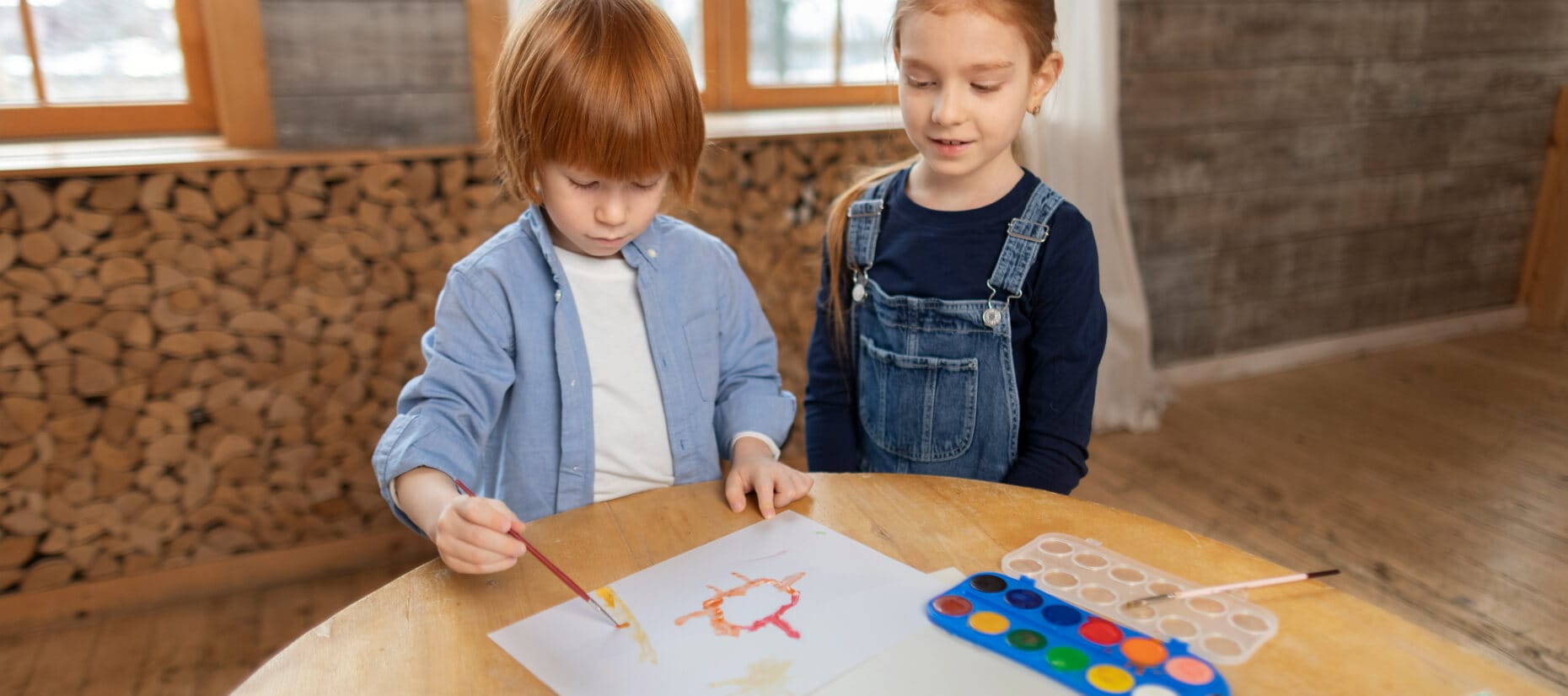Introduction
Home-schooling offers a unique opportunity to tailor your child’s education to their specific needs, interests, and learning style. One invaluable tool that can enhance this personalized learning experience is the use of printable worksheets.
Whether you’re new to home-schooling or a seasoned pro, incorporating printable worksheets into your curriculum can provide structure, encourage independent learning, and make complex subjects more accessible.
Why Printable Worksheets are Essential in Homeschooling
Printable worksheets have become a staple in many homeschool classrooms for good reason. They offer a structured way for students to practice and reinforce concepts taught during lessons. Worksheets can be used across a wide range of subjects, from math and science to language arts and social studies, making them a versatile tool in any homeschool educator’s toolkit.
The Flexibility of Printable Worksheets in Various Subjects
One of the greatest advantages of printable worksheets is their flexibility. They can be easily adapted to fit different subjects and learning objectives. Whether you’re focusing on early literacy skills, basic arithmetic, or more complex scientific concepts, there’s a worksheet out there to help your child practice and master the material.
Benefits of Using Printable Worksheets
Enhancing Learning through Repetition and Practice
Repetition is key to mastering any skill, and printable worksheets provide the perfect platform for this. By offering a variety of exercises on a single topic, worksheets allow students to practice until they feel confident in their understanding. This repetition reinforces learning and helps to solidify new concepts in a student’s mind.
Customizing Learning Based on Your Child’s Needs
No two children learn in exactly the same way, and one of the beauties of homeschooling is the ability to customize your child’s education. Printable worksheets can be selected and tailored to fit your child’s specific needs and learning style. Whether your child is a visual learner, a hands-on learner, or prefers written exercises, there’s a worksheet that can cater to their strengths.
Encouraging Independent Learning
Printable worksheets can also foster independence in young learners. By working through a worksheet on their own, children develop critical thinking skills and learn to solve problems independently. This not only boosts their confidence but also prepares them for more advanced learning down the line.
Cost-Effective and Easily Accessible Resources
Homeschooling can be expensive, but printable worksheets are a cost-effective way to provide your child with high-quality learning materials. Many websites offer free or low-cost worksheets that cover a wide range of topics. Plus, since they’re digital, you can print as many copies as you need, making them an excellent resource for large families or co-ops.
How to Choose the Right Printable Worksheets
Aligning Worksheets with Your Curriculum Goals
When selecting printable worksheets, it’s important to ensure they align with your overall curriculum goals. Look for worksheets that reinforce the key concepts you’re teaching and that fit within the broader framework of your educational plan. This alignment helps create a cohesive learning experience for your child.
Selecting Age-Appropriate and Skill-Level-Specific Worksheets
It’s also crucial to choose worksheets that are appropriate for your child’s age and skill level. Worksheets that are too easy won’t challenge your child, while those that are too difficult may cause frustration. Pay attention to the grade level and specific skills the worksheet targets to ensure it’s a good fit.
Ensuring Variety and Engagement in Learning
To keep your child engaged, choose worksheets that offer a variety of activities and formats. This could include puzzles, matching exercises, fill-in-the-blank questions, and more. Mixing up the types of worksheets you use can help maintain your child’s interest and prevent learning from becoming monotonous.
Integrating Printable Worksheets into Daily Lessons
Scheduling and Planning with Worksheets
One of the best ways to integrate printable worksheets into your homeschool curriculum is to plan for them in your daily schedule. Decide in advance which worksheets will complement your lessons and set aside specific times for your child to complete them. This ensures that worksheets become a regular part of your child’s learning routine.
Combining Worksheets with Hands-On Activities
While worksheets are a valuable tool, they shouldn’t be the only method you use to teach a subject. Combine worksheets with hands-on activities, experiments, and discussions to provide a well-rounded learning experience. For example, after completing a math worksheet, you might have your child apply what they’ve learned by cooking a recipe or building a model.
Using Worksheets for Assessment and Progress Tracking
Worksheets can also be a helpful tool for assessing your child’s understanding of a subject. By reviewing completed worksheets, you can gauge which concepts your child has mastered and which areas might need more attention. This ongoing assessment helps you adjust your teaching strategies as needed.
Printable Worksheets Across Different Subjects
Math Worksheets for Building Fundamental Skills
Math can be a challenging subject for many students, but printable worksheets can make it easier by breaking down complex concepts into manageable exercises. From basic addition and subtraction to more advanced topics like fractions and algebra, math worksheets provide the practice needed to build a strong foundation in this essential subject.
Language Arts Worksheets for Enhancing Literacy
Language arts worksheets can help improve your child’s reading, writing, and comprehension skills. These worksheets often include activities like reading passages, answering comprehension questions, and practicing grammar and vocabulary. By regularly working on language arts worksheets, your child can develop stronger literacy skills that will benefit them across all subjects.
Science Worksheets for Experimentation and Observation
Science is another subject where printable worksheets can be particularly useful. Worksheets that focus on observation, hypothesis formation, and experimentation can help your child develop critical thinking skills. Additionally, science worksheets often include diagrams and illustrations that make complex concepts easier to understand.
History and Social Studies Worksheets for Critical Thinking
History and social studies worksheets can bring the past to life and encourage your child to think critically about the world around them. These worksheets might include timelines, map activities, and questions that prompt your child to analyze historical events and their impacts.
Creating Your Own Printable Worksheets
Tools and Resources for Designing Worksheets
If you can’t find exactly what you’re looking for, creating your own printable worksheets is a great option. There are numerous online tools and resources that allow you to design custom worksheets tailored to your child’s needs. These tools often include templates and clipart that make the process easy, even if you’re not particularly tech-savvy.
Tailoring Worksheets to Your Child’s Learning Style
When creating your own worksheets, consider your child’s learning style. For visual learners, include plenty of images and diagrams. For hands-on learners, you might design worksheets that require cutting, pasting, or drawing. Tailoring worksheets to your child’s strengths will make learning more effective and enjoyable.
Incorporating Visuals and Interactive Elements
To keep your child engaged, incorporate visuals and interactive elements into your worksheets. This could include color-coded sections, spaces for drawing, or activities that require movement. The more interactive the worksheet, the more likely your child is to stay focused and retain the information.
Managing and Organizing Printable Worksheets
Effective Storage Solutions for Printed Worksheets
With so many printable worksheets, it can be easy for them to pile up and become disorganized. To keep everything in order, develop a system for storing completed worksheets. This could include using binders with dividers for each subject, filing cabinets, or even digital storage solutions where you scan and save copies of your child’s work.
Digital Tools for Organizing and Storing Worksheets
In addition to physical storage, consider using digital tools to organize and store your worksheets. There are many apps and software programs that allow you to create folders, tag documents, and easily retrieve files when needed. This can be especially helpful if you’re using a mix of printed and digital worksheets.
Conclusion
Printable worksheets are a powerful tool in the homeschooling arsenal. They provide structure, reinforce learning, and can be customized to meet the unique needs of your child. By thoughtfully selecting and integrating printable worksheets into your homeschool curriculum, you can enhance your child’s education and make learning a more engaging, effective, and enjoyable experience.
Latest Posts

How to Make Math Exciting for Early Learners (K-2)
Discover creative strategies and engaging activities...
Read more
Enhancing Early Childhood Cognitive Development Through Play
Discover how play fosters creativity, problem-solving,...
Read more
Boosting Confidence in Children: Practical Tips for Parents
Discover practical tips to help boost...
Read more
The Role of Technology in Modern Kids’ Education
Explore how technology transforms kids’ education,...
Read more
Related post
-

Boosting Confidence in Children: Practical Tips for Parents
Discover practical tips to help boost your child’s confidence and self-esteem. Learn how to encourage growth, independence, and resilience in…
Read more -

Kids Junction
Colors play a key role to create an environment that enhances learning and improves memory. Here are such wonderful, free…
Read more -

How to Encourage Critical Thinking Skills in Young Learners
With colorful images and captivating themes, children will delight in the challenge of matching pictures, fostering cognitive development and problem-solving…
Read more









